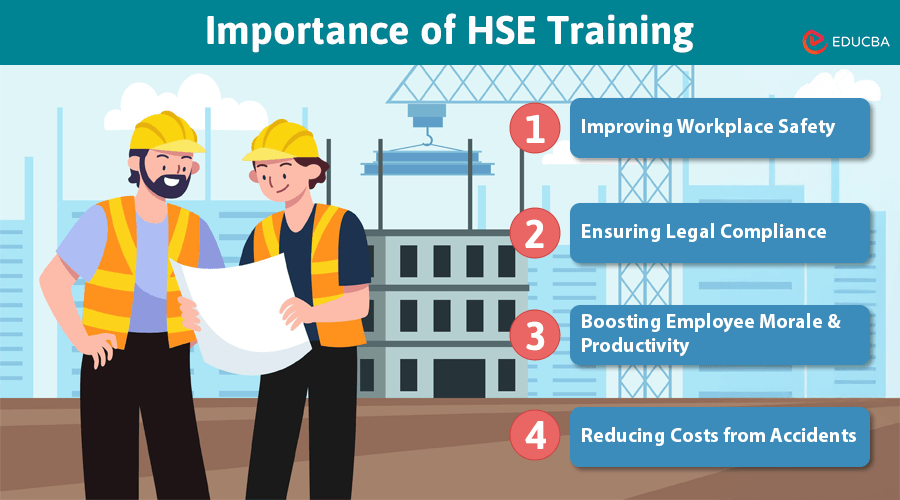
What is HSE Training?
HSE (Health, Safety, and Environment) training teaches employees how to work safely and protect the environment. HSE training helps prevent accidents, ensures proper equipment handling, and reduces the environmental impact of a company’s operations.
It’s important for all businesses, especially in industries like construction, oil and gas, healthcare, and manufacturing.
Importance
Following are the importance of the HSE Training:
#1. Improving Workplace Safety
A core objective of HSE training is to create a safer workplace environment. It teaches employees to spot and handle risks.
For example, workers learn how to safely operate machinery or handle hazardous materials. By reducing workplace accidents, companies save money and create a healthier work environment.
| Before Training | After Training |
| Frequent accidents | Fewer accidents |
| High medical expenses | Lower medical expenses |
| Downtime due to injuries | Increased productivity |
#2. Ensuring Legal Compliance
Every company must follow safety laws, or they risk penalties. This training ensures that employees know the rules and follow them. This helps businesses avoid legal trouble and keep operations running smoothly.
#3. Boosting Employee Morale and Productivity
Employee morale and workplace safety are interconnected. This means that employees who feel safe are more likely to be motivated and productive. Effective training makes the workforce feel valued as they know the company has invested in their well-being.
#4. Reducing Costs from Accidents
Accidents can be expensive, with costs for medical care, legal fees, and equipment repairs. This training reduces these risks, which means fewer costs for the business.
| Without HSE Training | With HSE Training | |
| Medical bills | High | Low |
| Downtime | Frequent | Rare |
| Insurance premiums | High | Lower over time |
Benefits for Companies
- Improving Company Reputation
Companies that prioritize HSE are more likely to attract customers, investors, and partners. A strong commitment to safety and the environment boosts public perception and can lead to awards and recognition.
- Building a Culture of Continuous Improvement
HSE training is an ongoing process. Regular refresher courses and employee feedback ensure that safety practices are always improving. Employees become more engaged and take ownership of safety in the workplace.
| Before Refresher Courses | After Regular Training |
| Forget key safety measures | Always aware of procedures |
| Outdated practices | Up-to-date knowledge |
Does it Vary Industry-Wise?
Yes, each industry has different risks, so HSE training should be customized accordingly.
For instance:
| Industry | The training focus should be on the following: |
| Manufacturing | Machine safety, handling chemicals |
| Construction | Equipment safety, fall prevention |
| Oil & Gas | Fire safety, handling hazardous materials |
| Healthcare | Safe waste disposal, infection control |
Benefits of Online HSE Training
Online training offers flexibility, making it easier for employees to learn at their own pace. It’s especially helpful for companies with remote workers or multiple locations.
Advantages:
- Available anytime, anywhere.
- Interactive elements like videos and quizzes keep learners engaged.
- Easy to update as laws or safety standards change.
Final Thoughts
Health, Safety, and Environment training is essential for creating a safe and productive workplace. It helps prevent accidents, keeps companies compliant with the law, and boosts employee morale.
Over time, investing in this training leads to cost savings, a better reputation, and a more engaged workforce.
Recommended Articles
If you found this article on “Health, Safety, and Environment Training” helpful, consider reading the following recommendations.
